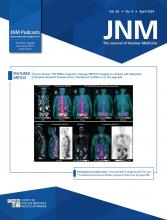Abstract
Bone mineral density (BMD) measurement by dual-energy x-ray absorptiometry (DXA) is an internationally accepted standard-of-care screening tool used to assess fragility fracture risk. Society guidelines have recommended which populations may benefit from DXA screening and the use of the Fracture Risk Assessment Tool (FRAX®) to guide decisions regarding pharmacologic treatment for osteoporosis. According to the United States National Osteoporosis Foundation guidelines, postmenopausal women and men ≥50 years with osteopenic BMD warrant pharmacologic treatment if their FRAX-calculated 10-year probability of either a hip fracture is ≥3% or a major osteoporotic fracture is ≥20%. Patients with osteoporosis defined by a clinical event, namely a fragility fracture, or with an osteoporotic BMD should also be treated. Patients who are treated for osteoporosis should be monitored regularly to track expected gains in BMD by serial DXA scans. With some drug therapies, BMD targets can be reached whereby further improvements in BMD are not associated with further reductions in fracture risk. While reaching this target might suggest a stopping point for therapy, the reversibility of most treatments for osteoporosis, except for the bisphosphonates, has dampened enthusiasm for this approach. In the case of denosumab, it is now apparent that stopping therapy at any point can lead to an increase in multiple fracture risk. For patients who do not respond to antiosteoporosis pharmacologic therapy, with an improvement in BMD or an incident fragility fracture, other intervening issues, such as vitamin D deficiency, and/or compliance should be considered.
- Copyright © 2020 by the Society of Nuclear Medicine and Molecular Imaging, Inc.







